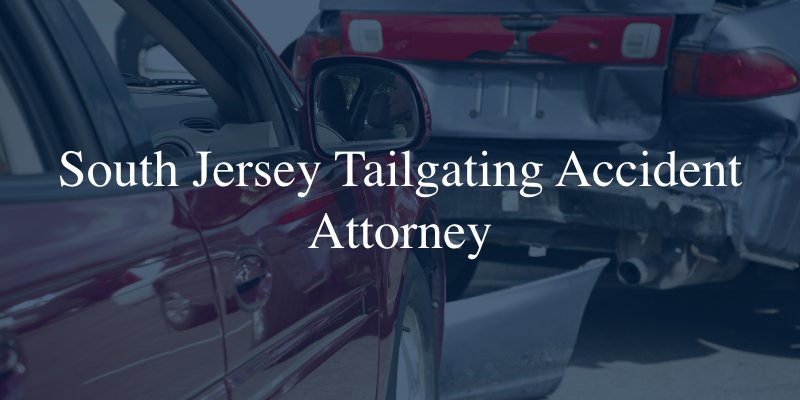South Jersey Tailgating Accident Lawyer
Request a Free ConsultationTraffic in South Jersey can be frustrating, especially during congested road conditions and rush-hour commutes. Often, we describe traffic congestion as “bumper to bumper” but drivers have a duty to maintain ample distance between the front end of their vehicle and the back end of the one directly in front of them. Experts recommend one car length of space between vehicles for every ten miles per hour of speed. If traffic is moving at 30 miles per hour, a driver should keep three car lengths between their vehicle and the one in front.
What Types of Accidents Happen Due to Tailgating in South Jersey?

The most common type of accident caused by drivers who fail to leave adequate space between vehicles is rear-end collision. Rear-end collisions happen when a driver is directly behind another vehicle and fails to stop in time to avoid a collision when the front vehicle slows or stops. The front end of a car hits the rear end of a vehicle in a rear-end collision. Whiplash and other injuries are usually worse for those in the front vehicle because they don’t see the collision coming and cannot brace for impact. About 17.3% of two-car accidents are rear-end collisions, resulting in around 3,400 fatalities per year.
In high-traffic areas, tailgating can result in multicar accidents. When one vehicle experiences an accident or two cars collide, tailgating drivers may not have adequate stopping room, resulting in further collisions and a multi-car pileup.
What Is the Three-Second Rule?
Sometimes judging car lengths between vehicles is challenging. One way to determine whether or not there is adequate space between your car and the rear-end or tailgate of the vehicle directly in front is to follow the three-second rule. Choose a stationary object on the roadside and once the car in front passes the object, begin counting. You should be able to count to at least three before you pass the same object.
Unfortunately, leaving adequate space between your vehicle and the car directly in front sometimes allows aggressive drivers to cut you off by moving into the space. As frustrating as it might be, the best option in this case is to drop back and allow space between your car and the car that cut you off.
Injuries in Tailgating Accidents in South Jersey
Tailgating accidents are common causes of whiplash in occupants of the front car. Whiplash occurs when a rear-end collision causes the rapid back-and-forth motion of the head and over-extension of the neck structures. Other injuries in South Jersey tailgating accidents include the following:
- Back injuries
- Wrist injuries
- Knee injuries
- Brain injuries
- Fractures
- Soft tissue injuries
- Bruises, lacerations, and abrasions
Injuries may also occur to those in the rear vehicle, especially distracted drivers who don’t brace for the impact because they aren’t looking ahead. Speak to a South Jersey car accident lawyer to learn more.
Tailgating and Distracted Driving
Distracted driving is a continually growing problem in New Jersey and elsewhere. When a distracted driver is looking at their phone or answering a text, they may fail to see a car stopping or slowing down in front of them. If they are tailgating, the chances of a collision increase if their attention isn’t on the road ahead. Distracted driving also occurs when a driver adjusts a sound system, grooms themselves in the rear-view mirror, retrieves a dropped object, or interacts with passengers in the back seat.
What Can a Tailgating Accident Attorney Do For Me?
If another driver’s tailgating results in a rear-end collision and you suffer property damage, injuries, or the wrongful death of a loved one, a tailgating accident lawyer can help you recover compensation for your economic and non-economic damages through an insurance claim or lawsuit. Call the experienced South Jersey injury lawyers at Grungo Law for a free evaluation of your case so we can take prompt action for financial accountability in your case.
